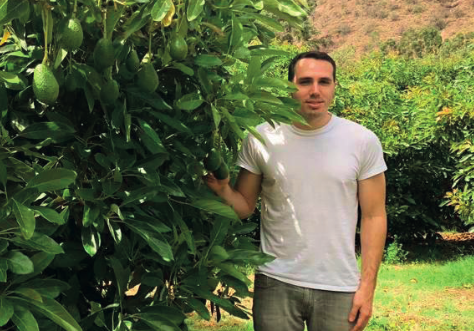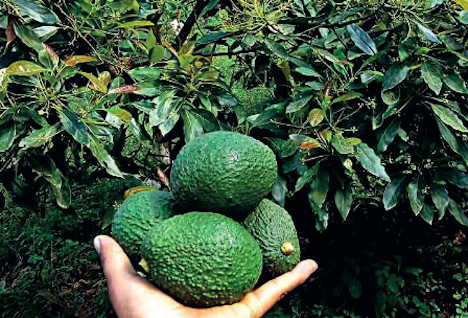Take an (expected) overproduction of avocados, a delayed first harvest which overlaps with the following ones, and of course...the Covid-19 crisis. This leads to an overstock that is difficult to sell in Europe where avocados are a very popular product.
All the circumstances were gathered to make this 2020 campaign of avocados from Peru quite tumultuous!
Jean-Claude Mercier Ganoza, head of operations at Fruglobe, based in Lima and long-term partner of Capexo, looks back on this unprecedented season.

How was the beginning of the campaign?
“The season started well, with a favorable market stimulated by a high demand for healthy fruit in Europe, in order to fight Covid-19. It was good news because Peru had expected the 2020 harvest to be 25 to 30% higher than in 2019. Therefore, no one was surprised by the volumes. The quality was also good, with a dry matter at 23-24%.”
“But after a late start of the season in Olmos, the harvest overlapped with that of Chavimochic and this (expected) overproduction turned into an overstock! Peru therefore shipped 600 to 700 containers between week 19 and 24. 73% of the shipments were sent to Europe, which led to a significant price drop upon arrival. This, however, did not necessarily change prices in the stores for consumers. The United States only received 15% of the shipments, which created an imbalance, with an overstock on the European market.”
“How can you explain this difference in exported quantities between Europe and the United States, while North America represents the world’s largest avocado market?
“The United States benefits from two main exporters: Mexico and California. They therefore depend less on other exporting countries like Peru. Besides, they were only counting on the Peruvian production for the month of June. Mexico can produce avocados all year round, so the risk of disruption is limited for the United States.”
How did the Covid-19 crisis impact Peru?
“Peru is the 7th most contaminated country in the world. Covid-19 has affected the way we worked during the first weeks, because the country was on strict lockdown. The curfew did not help the situation. However, food companies, like ours, are considered by the government to be of prime necessity, so we were able to continue our activity, thanks to a special authorization and the implementation of barrier gestures and face masks. We can work almost normally but the anguish of getting sick is on everyone’s mind.”

Is Peru the only exporting country to be in this overstock situation?
“Mexico was in a similar situation in April. Because of Covid-19 and the lower demand on the American market, the country was only able to send 30 million tons of avocados in 3 weeks, instead of the expected 45 during this period.”
Did this overstock allow you to explore new markets?
“Absolutely. It is the opportunity to propose our products to Asian countries such as Thailand, Korea, or even China. These markets are still hesitant, but promising.
Redirecting our stocks towards these countries allowed us to reach some balance and to guarantee a decent remuneration for our producers.”
What about the next few months on the European market?
“We are expecting the market to lighten up and improve during the first week of August in Europe. Peru has already learned some lessons and redirected or reduced its volumes to Europe. However, it takes time to get rid of the old stocks. We plan to send 400 to 500 containers per week to Europe, in order to reach an acceptable balance for all.
If promotional actions were put in place by supermarkets, offering advantageous prices, we believe that this would help increase the demand. It is possible to shift volumes while reducing the margins efficiently.”
Can we be faced with such a situation again in the coming years?
“It is absolutely possible, yes. Each year, Peru has new farms, in order to meet the increasing demand on the market (12 to 15% growth per year for Europe, 8% for the United States). A new overlap of the harvests is certainly conceivable. Not to mention that from one year to another, an avocado tree can give a lot of fruit or very little. It is therefore difficult to make exact predictions. Knowing how to estimate the quantities necessary for each market is our main challenge, in order to avoid shortages or overstocking.”
What do you take away from this campaign?
“I think that there was a significant error of judgment on the part of the main Peruvian exporters, for not having reduced their volumes when we had some visibility on the shipping data. Those weeks should have been handled with more precision, by spacing out volumes for a fair flow, week after week. The goal is to never overload a market with too many containers. With such a large offer and demand, it can be difficult to achieve this and it requires a high level of planning and communication between all actors of the industry, from the source to the destination. Market diversification is highly important to obtain a well-balanced supply, to meet the demands of our consumers all over the world. Shippers seem to be in a hurry to access a very good market, but in the end, when their containers reached Europe, their prices were significantly affected. This volatility of the avocado market is one of our biggest challenges. At Fruglobe, we always try to have a constant supply, every day of the year, from multiple origins in order to provide a sustainable supply of products to our partners and consumers.”
For more information:
François Bellivier
Phone: 01 41 73 23 00
Mobile: 06 75 03 76 54
f.bellivier@capexo.fr
www.capexo.fr
